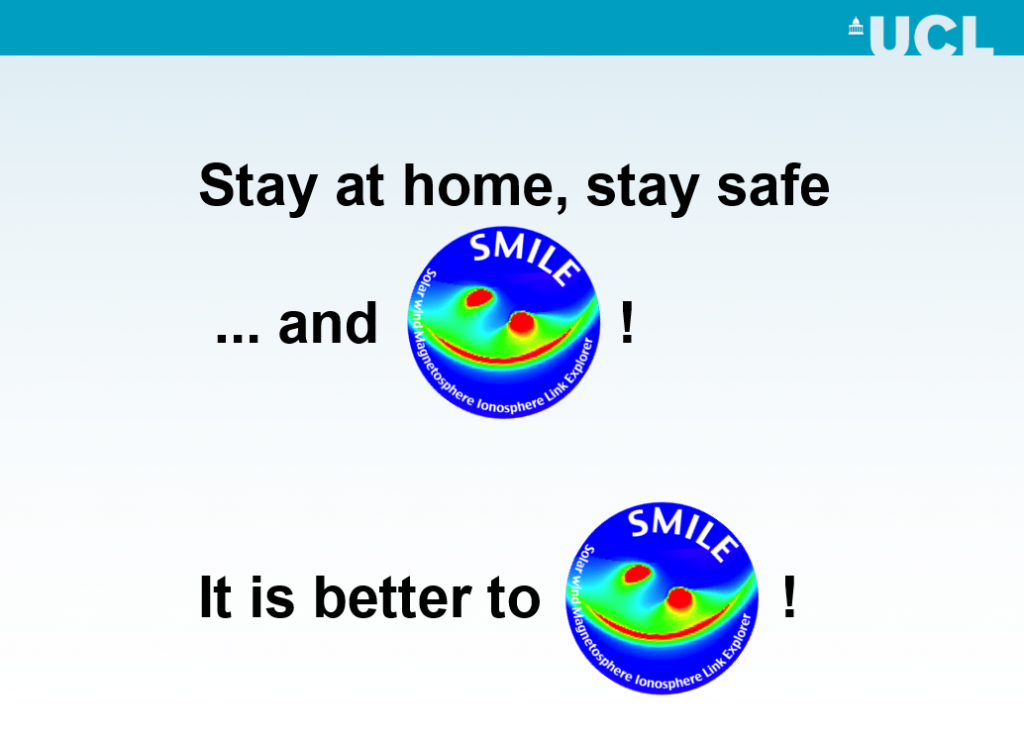The fifth lecture-webinar of TUKE Space Forum will be dedicated to the SMILE ESA mission. If you look at all European Space Agency missions, SMILE is definitely the one with the most beautiful name 🙂
Graziella Branduardi-Raymont, Co-leader of the SMILE, will present the SMILE mission.
Featured image credit: ESA/ATG medialab

Title of the lecture: The SMILE mission: A novel way to study solar-terrestrial interactions
The interaction between the solar wind and the Earth’s magnetosphere, and the geospace dynamics that result, comprise some of the key questions in space plasma physics. In situ measurements by a fleet of solar wind and magnetospheric missions now provide the most detailed observations of the Sun-Earth connections. However, we are still unable to quantify the global effects of the drivers of such connections, including the conditions that prevail throughout geospace. This information is the key missing link for developing a complete understanding of how the Sun gives rise to and controls the Earth’s plasma environment and space weather.
SMILE (Solar wind Magnetosphere Ionosphere Link Explorer) is a novel self-standing mission dedicated to observing the solar wind – magnetosphere coupling via simultaneous X-ray imaging of the magnetosheath and polar cusps, UV imaging of global auroral distributions and in situ solar wind/magnetosheath plasma and magnetic field measurements. Remote sensing of the magnetosheath and cusps with X-ray imaging is now possible thanks to the discovery of solar wind charge exchange X-ray emission. It was first observed at comets and subsequently found to occur in the vicinity of the Earth’s magnetosphere. SMILE is a collaborative mission between ESA and the Chinese Academy of Sciences (CAS) that was selected in November 2015, adopted into ESA’s Cosmic Vision Programme in March 2019, and is due for launch at the end of 2023. The science that SMILE will deliver, as well as the technical developments currently ongoing, will be presented.
About the speaker:
Graziella Branduardi-Raymont is a Professor of Space Astronomy in the Department of Space and Climate Physics, Mullard Space Science Laboratory (MSSL), of University College London (UCL). After a degree in Physics at the University of Milano, Italy, and a Ph.D. in X-ray Astronomy at UCL, she worked at the Harvard-Smithsonian Center for Astrophysics, USA before returning to MSSL.
Graziella has practiced astronomy research from space for many years. She has been a scientific team member for several major X-ray astronomy space missions. Such as a co-Investigator and project manager of the MSSL element for the Reflection Grating Spectrometer, which has been operating successfully on-board ESA’s XMM-Newton observatory for the past two decades. Her current primary focus is in the role of Co-leader (with Prof. Chi Wang of CAS NSSC) of the SMILE (Solar wind Magnetosphere Ionosphere Link Explorer) mission, the first ESA-CAS joint space project from initial design to implementation, launch and flight operations, due for launch at the end of 2023.
Graziella’s current research fields encompass X-ray properties of solar system objects and Active Galactic Nuclei. Alongside her research, she is active in teaching and training undergraduate and postgraduate students, in particular supervising their research projects. She has taught many courses in disciplines linked to Space, such as high energy astrophysics, space science, environment and satellite missions, space instrumentation and applications, space operations, and project organization.
The lecture will be teleconferenced via Zoom at
Date and time of the event: Wednesday, April 22, 2020 at 16:00
You can ask questions via slido, event code #57200.
2 replies on “Webinar: The SMILE mission: A novel way to study solar-terrestrial interactions”
It is truly a nice and helpful piece of information. I am glad that you simply shared this helpful info with us. And also thank you for your detailed explain.
Thank you for sharing.
Why did you interest to make this SMILE?